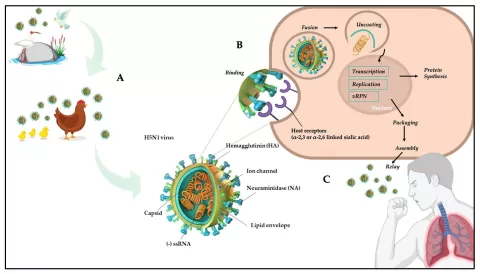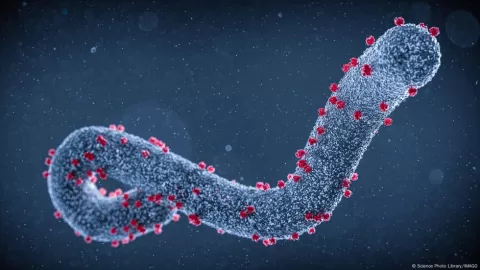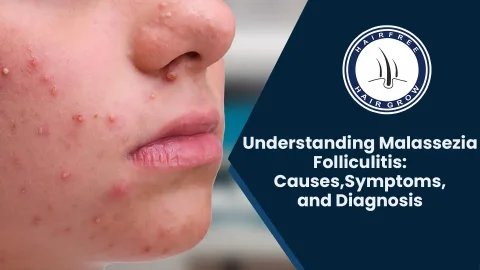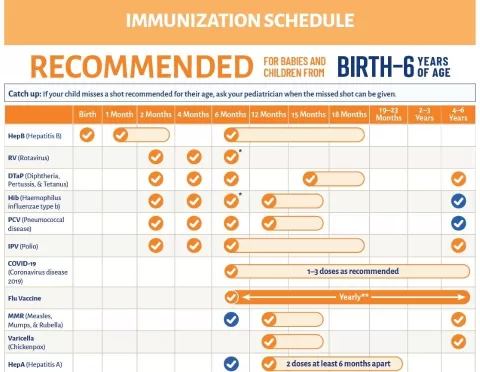The emergence of NDM-7 Enterobacter cloacae resistance has become a pressing public health issue, particularly in France, where its prevalence among carbapenem-resistant Enterobacterales is alarmingly rising. Identified on InX3 plasmids, the bla NDM-7 gene is pivotal in conferring antimicrobial resistance and complicating treatment options for infections caused by multidrug-resistant bacteria. As New Delhi metallo-β-lactamase continues to spread, healthcare professionals face increased challenges in managing infections that were once easily treatable with carbapenems. Enhanced surveillance and robust public health strategies are critical in combating the rising threat of NDM-7 and its associated resistance mechanisms. The study of the Enterobacter cloacae prevalence in hospital settings underscores the urgent need for ongoing monitoring of antimicrobial resistance patterns, ensuring timely intervention and containment strategies are developed for effective disease management.
The rising challenge of antibiotic resistance, especially within the Enterobacter cloacae complex, is intricately linked to the emergence of variants such as NDM-7. This specific resistance mechanism is part of a broader phenomenon involving New Delhi metallo-β-lactamase, where bacteria become increasingly difficult to treat with existing medications. As carbapenem-resistant Enterobacterales proliferate, driven by the dissemination of resistance genes carried on plasmids like InX3, the healthcare community must grapple with the implications of these changes. The significant presence of bla NDM-7 in clinical isolates not only reflects growing antimicrobial resistance trends but also signals the need for vigilant monitoring and innovative solutions to counteract this urgent health threat. Understanding the dynamics surrounding Enterobacter cloacae’s prevalence offers critical insights for future research and treatment protocols.
Understanding NDM-7 Enterobacter cloacae Resistance
The emergence of NDM-7 Enterobacter cloacae resistance represents a significant public health concern in the ongoing battle against antimicrobial resistance. The New Delhi metallo-β-lactamase (NDM) enzymes are known to confer resistance to a wide range of beta-lactam antibiotics, particularly carbapenems, which are often the last line of defense against multidrug-resistant infections. In recent years, the spread of the bla NDM-7 gene, particularly through IncX3 plasmids, has been documented in various regions, raising alarms about its increasing prevalence and the implications for treatment options.
Research conducted on NDM-7–producing Enterobacter cloacae complex (ECC) isolates in France from 2021 to 2023 highlights the polyclonal dissemination of this resistance mechanism. With a significant 32.4% of carbapenem-resistant Enterobacterales isolates attributed to NDM-7 by 2023, understanding the genetic diversity among these resistant strains is crucial. Enhanced molecular surveillance is now more important than ever to track the spread and evolution of NDM-7, especially as it appears to be associated with multiple sequence types, indicating a complex transmission dynamic.
The Role of InX3 Plasmids in Antimicrobial Resistance
InX3 plasmids play a pivotal role in the spread of antimicrobial resistance among Enterobacter cloacae complex populations. These plasmids not only harbor the bla NDM genes responsible for metallo-β-lactamase production but also contain various virulence factors that enhance the survival of the bacteria in a host environment. The co-localization of resistance genes on these plasmids can lead to the rapid dissemination of resistance traits among bacterial populations, exacerbating the challenge of treating infections caused by carbapenem-resistant Enterobacterales.
The surveillance data from France indicates a significant uptick in the identification of NDM-7–carrying InX3 plasmids over the past few years. From comprehensive surveillance efforts, researchers have found that these plasmids contribute to the complex landscape of antimicrobial resistance mechanisms within Enterobacter cloacae. The implications of plasmid-mediated resistance extend beyond individual infections, raising concerns about the broader public health ramifications as these resistant strains can easily spread in healthcare settings and the community.
Prevalence of Carbapenem-Resistant Enterobacterales in France
The prevalence of carbapenem-resistant Enterobacterales (CRE) in France has shown alarming growth, with NDM-producing isolates increasing from 22.5% in 2021 to 32.4% in 2023. This trend underscores the need for vigilant monitoring and improved infection control practices across healthcare facilities. As the percentage of resistance rises, clinicians must adapt their strategies for managing infections caused by these organisms, often resorting to less effective or more toxic treatment alternatives.
Data collected by the French National Reference Center for Antimicrobial Resistance illustrates that the escalation of NDM-producing Enterobacter cloacae complex is not just a localized issue but a reflection of a broader, global challenge with antimicrobial resistance. With 107 identified NDM-7 producers and 32 different sequence types among them, understanding the dynamics of this resistance is vital for developing effective response strategies to combat rising antimicrobial resistance.
Phylogenetic Analysis of NDM-Producing Strains
The phylogenetic analysis conducted on NDM-7–producing Enterobacter cloacae complex isolates reveals a complex network of genetic relationships and transmission paths. Identifying 32 distinct sequence types (STs) among these isolates implies that this resistance has not emerged in isolation but rather through a concerted evolutionary process involving genetic exchange and adaptation. The most prevalent STs associated with NDM-7 are indicative of how certain lineages may possess enhanced fitness, facilitating their spread within healthcare and community settings.
Furthermore, the genetic and phenotypic characterization of NDM-producing strains showcases the ongoing adaptation mechanisms at play. This diversity among NDM producers emphasizes the need for targeted interventions in antimicrobial stewardship and infection control practices to effectively prevent the spread of these multi-resistant strains. Understanding the phylogenetic landscape is crucial for anticipating future outbreaks and developing more effective treatment regimens tailored to the specific resistance mechanisms present in local populations.
The Importance of Enhanced Surveillance in Antimicrobial Resistance
Enhanced surveillance plays a critical role in tackling the rise of antimicrobial resistance, particularly concerning NDM-7 Enterobacter cloacae complex. Continuous monitoring of antibiotic resistance patterns is essential for public health strategies aimed at controlling infections caused by multidrug-resistant organisms. By systematically collecting and analyzing resistance data, health authorities can track trends, anticipate outbreaks, and formulate timely interventions, thereby mitigating the spread of resistant strains.
The experience gained from recent surveillance initiatives emphasizes the need for not only standardized reporting systems but also international collaboration in combating antimicrobial resistance. With cross-border transmission of resistance determinants a reality, it is vital for countries to work together in sharing data and research findings. Such collaborative efforts foster a comprehensive approach to understanding and addressing the emergence and spread of resistant pathogens like those bearing the bla NDM-7 gene, ultimately safeguarding public health worldwide.
Adapting Treatment Strategies for Emerging Resistance
As NDM-7 Enterobacter cloacae resistance becomes increasingly prevalent, adapting treatment strategies is critical for managing infections caused by these organisms. Clinicians are faced with the challenge of prescribing effective antibiotics while navigating the limitations imposed by rising resistance. Treatment protocols must evolve to incorporate the latest data on resistance patterns, with an emphasis on using combination therapies or alternative agents where possible, to retain efficacy against these formidable pathogens.
Research into novel antimicrobials and adjunctive therapeutics also plays a pivotal role in responding to this growing crisis. Development of new drugs that bypass existing resistance mechanisms or enhance the effectiveness of traditional antibiotics is essential for future treatment regimens. Continuous education and training for healthcare providers on emerging resistance patterns and therapeutic options enable them to make informed decisions in the face of rising antimicrobial resistance.
Investigating Co-carriage of Resistance Markers
The co-carriage of multiple resistance markers in Enterobacter cloacae complex poses significant challenges for clinicians treating infections. The genetic mobility associated with plasmids such as InX3 enables the rapid dissemination of resistance genes like bla NDM-7 alongside other virulence factors, leading to heightened resistance in clinical isolates. Investigating the genetic context of these co-resistance events is vital for understanding their impacts on treatment options and patient outcomes.
Additionally, exploring the mechanisms behind the co-selection of resistance traits can provide insights into the dynamics of antimicrobial resistance spread. Understanding the factors that facilitate the maintenance and transmission of these resistance vectors could inform better prevention strategies at both the individual and population levels. Continued research in this area is crucial for developing effective interventions that curb the rise of poly-resistant bacterial strains associated with critical public health challenges.
Impact of Environmental Factors on Resistance Development
Environmental factors significantly influence the emergence and development of antimicrobial resistance among bacteria. Conditions such as antibiotic use in agriculture, environmental contamination, and healthcare practices all contribute to the selective pressure that fosters the propagation of resistant strains like NDM-7 Enterobacter cloacae. Studies have indicated that the prevalence of these resistant organisms can correlate with patterns of antibiotic usage in both clinical and agricultural settings.
Understanding the complex interactions between environmental factors and resistance patterns is essential for developing effective strategies to mitigate the risks associated with antimicrobial resistance. Public health initiatives that incorporate environmental health strategies are crucial in addressing the multifaceted nature of the resistance crisis. By tackling the underlying drivers of resistance, health authorities can create a more favorable environment for controlling the emergence and spread of resistant strains.
Future Directions in Antimicrobial Resistance Research
As the landscape of antimicrobial resistance evolves, future research directions must focus on innovative approaches to understanding and combating resistance mechanisms in pathogens like Enterobacter cloacae. Key areas of investigation include genetic mechanisms, transmission dynamics, and the global impact of antimicrobial stewardship programs. By fostering interdisciplinary collaboration, researchers can generate comprehensive insights that drive the development of effective interventions tailored to the unique challenges posed by resistant organisms.
Moreover, integrating advanced technologies such as genomics, proteomics, and bioinformatics into research strategies will enable a deeper understanding of the intricate networks of resistance. This scientific progression is essential for identifying potential therapeutic targets and uncovering novel strategies to outmaneuver the adaptability of resistant pathogens in clinical settings. Continuous investment in research and development is imperative for preserving the efficacy of antimicrobials in the face of rising global resistance.
Frequently Asked Questions
What is NDM-7 Enterobacter cloacae resistance and why is it a concern?
NDM-7 Enterobacter cloacae resistance refers to the ability of Enterobacter cloacae strains to resist treatment with carbapenems due to the presence of the NDM-7 gene, a variant of New Delhi metallo-β-lactamase. This resistance poses significant clinical challenges as it limits the effectiveness of last-resort antibiotics, increasing the risk of treatment failure and severe infections.
How does the InX3 plasmid contribute to NDM-7 Enterobacter cloacae resistance?
The InX3 plasmid is known to harbor the bla NDM-7 gene, which encodes resistance to carbapenems in Enterobacter cloacae. This plasmid can carry additional antimicrobial resistance and virulence factors, enhancing the bacteria’s ability to survive and multiply in healthcare settings.
What is the prevalence of NDM-7 producing Enterobacter cloacae in France from 2021 to 2023?
From 2021 to 2023, NDM-7 producing Enterobacter cloacae complex isolates significantly increased in France, accounting for a growing percentage of carbapenem-resistant Enterobacterales. Genetic characterization identified 107 NDM-7 isolates among 3,367 NDM producers, indicating a concerning rise in prevalence.
What role does enhanced surveillance play in combating NDM-7 Enterobacter cloacae resistance?
Enhanced surveillance is crucial for monitoring the spread of NDM-7 Enterobacter cloacae resistance. By tracking these strains, health authorities can implement timely infection control measures and adapt treatment guidelines to mitigate the impact of antimicrobial resistance in clinical settings.
What types of infections are associated with NDM-7 Enterobacter cloacae resistance?
NDM-7 Enterobacter cloacae resistance often leads to severe infections, particularly in healthcare settings. These can include pneumonia, bloodstream infections, urinary tract infections, and wound infections, especially in immunocompromised patients where treatment options are limited.
Why is it important to understand the genetic diversity of NDM-7 producing Enterobacter cloacae?
Understanding the genetic diversity of NDM-7 producing Enterobacter cloacae is important for tracking the spread of resistance mechanisms and guiding public health interventions. Identifying sequence types and their transmission patterns can help develop targeted measures to control outbreaks and improve patient outcomes.
What are the implications of finding multiple sequence types within NDM-7 Enterobacter cloacae?
The identification of multiple sequence types within NDM-7 Enterobacter cloacae indicates a polyclonal dissemination of antibiotic resistance. This diversity complicates efforts to control infections as different strains may respond variably to treatment and infection control practices.
How does the rise of NDM-7 Enterobacter cloacae influence antimicrobial resistance globally?
The rise of NDM-7 Enterobacter cloacae contributes to the global challenge of antimicrobial resistance by demonstrating the ability of bacteria to acquire and disseminate resistance genes swiftly. This trend necessitates coordinated international efforts to monitor, research, and combat multidrug-resistant organisms effectively.
| Key Points |
|---|
| Increased prevalence of NDM-7 among Enterobacter cloacae complex in France (2021-2023). |
| Monitoring and surveillance of antimicrobial resistance is crucial to control NDM-7 spread. |
| NDM-7 was identified on InX3 plasmids carrying resistance and virulence factors. |
| Carbapenem resistance is primarily attributed to the emergence of metallo-β-lactamases, especially NDM variants. |
| The number of NDM-producing Enterobacterales increased from 22.5% to 32.4% from 2021 to 2023. |
| Diverse plasmids carrying bla NDM genes include IncF, IncA/C, IncL/M, IncH, IncN, and IncX3. |
| Phylogenetic analysis showed polyclonal dissemination of NDM-7 among various sequence types in ECC. |
Summary
NDM-7 Enterobacter cloacae resistance is a growing concern, as detailed by the emergence and dissemination of the bla NDM-7 gene across France from 2021 to 2023. The increasing rates of NDM production in Enterobacter cloacae highlight a severe challenge in managing antibiotic resistance. Enhanced monitoring is essential in combating the spread of these multidrug-resistant strains, particularly as they become more prevalent among various Enterobacter species. The findings underscore the critical importance of vigilance and response strategies to address the implications of NDM-7 on public health.
The content provided on this blog (e.g., symptom descriptions, health tips, or general advice) is for informational purposes only and is not a substitute for professional medical advice, diagnosis, or treatment. Always seek the guidance of your physician or other qualified healthcare provider with any questions you may have regarding a medical condition. Never disregard professional medical advice or delay seeking it because of something you have read on this website. If you believe you may have a medical emergency, call your doctor or emergency services immediately. Reliance on any information provided by this blog is solely at your own risk.








